.
Hachijo-fuji 八丈富士山
Distance: 17.1 km
Elevation change: 854 metres
Highest point: 854 metres
Start: Sokodo Camping Ground
Finish: Sokodo Camping Ground
Difficulty: ▅▅▅▅▅▅▅▅▅▅ ❸
Map: Hachijo-Fuji hiking map
GPX TrackKML TrackGSI MAPPDF Topo Map
A Sea-to-Summit Assault to the Top of the Izu Islands Highest Peak
Located on a remote volcanic island in the Izu archipelago, finds the rather imposing Hachijo-fuji so named for a profile analogous to another famous mountain on the mainland. Notwithstanding its other slightly less impressive name of Nishi-yama the mountain remains the highest of the eight Izu Islands and with its lack of snow makes for superb year round hiking.
The cheapest means to Hachijo-jima 八丈島 is by the “Tachibanamaru” (Takai Kisen) an overnight passenger ship which departs daily at 22:30 from Takeshiba pier, a short walk from Hammatsucho Station and arrives the following morning at 08:50. This is probably the most practical mode if you’re going to be camping and carrying fuel canisters etc. Alternatively, the island is also serviced by three daily ANA flights from Haneda. Due to inclement weather causing the ferry to be cancelled, I was required to book a slighter more expensive one-way flight on the return journey. Provided you’re not travelling at peak times you can expect to more or less have your own room in the second class sleeping compartment. After disembarking make a beeline for the newish looking terminal building where there is an information counter, ensure to ask for a copy of the Hachijo-jima bilingual map and the local bus timetable which services the south-eastern portion of the island.
The nice thing about staying on Hachijo-jima is the free Sokodo camping ground 底土キャンプ場 located only a few hundred metres up the road from the port. This picturesque campsite overlooks Sokodo Beach and is beyond a doubt one of the best public camping grounds I’ve stayed. The campground includes a spacious undercover cooking area, BBQs, clean restrooms and even an outdoor hot water shower! During the four nights I stayed there, I met only one other camper though at peak times I’m told, upwards of 180 campers converge on the site. The main reason for the extended stay was due to the island’s humid subtropical climate which annually receives over 3,000 mm (121 inches) of rainfall, allowed some extra flexibility in picking the best weather for the hike. Personally I would be hesitant is doing the hike in cloudy or foggy weather due to the real chance of inadvertently falling off the side of a cliff.
The trail notes here describe a sea-to-summit ascent of Hachijo-fuji starting from the Sokodo campsite. From the campsite entrance turn right than left, following the main road uphill away from the coastline. Continue walking along this road until the third set of traffic lights (about 2 km) where you will see a carved rock with white writing pointing in the direction of Hachijo-fuji. Just before this traffic intersection there are some drink vending machines on the left which is the only place to buy water if leaving early in the morning. In the warmer months it would be advisable to carry at least 3 litres of water. From here you will be following a rather long stretch of bitumen which at times feels interminable. I’d imagine hitching a lift on this road would be relatively easy if so desired. Several points along the road provide splendid vistas across the island’s coastline. After about 50 minutes along this road you’ll pass a sign pointing to the airport 空港・大賀郷 which doubles as an alternative access route off the mountain.
Reaching the upper Hachimaki circuit road should take around 1 hr 45 mins from the campsite. Turn right here as indicated by the Hachijo-fuji summit trail entrance sign 八丈富士山頂登山入口. The trail head proper starts 5 minutes up the road on your left. Pass through the first of two green cow gates and start climbing the stone steps which lie beside an elevated concrete path for most of the route. While some sections include hand railing the hike isn’t particularly difficult provided you pace yourself. Before arriving at the crater rim the trail begins to flatten out after a solid 50 minutes of climbing. The crater is approximately 500 m in diameter and can be tackled in either direction though most folk seem to walk in a clockwise fashion.
The last volcanic activity of Hachijo-fuji occurred before the 17th century, bequeathing it with eroded basalt cliffs and a lush primordial like forest. Moving in a clockwise direction, it should take around 20 minutes to reach to true summit of Hachijo-fuji 八丈富士山 (854 m). A little further along great views are afforded towards neighbouring Hachijo-kojima some 7 kilometres out to sea. The full path around the crater takes one hour to complete at a leisurely pace. After returning to the starting point a further point of exploration involves journeying into the crater itself. While I only managed to get as far as the Sengen Shrine 浅間神社 with its colourful stones and inscribed wishes, a further option includes a less worn trail to the ‘center of the cone’ 中央火口丘 which sits beside a small crater lake. When you’re ready to head off all you need to do is repeat the route back to the camping ground.
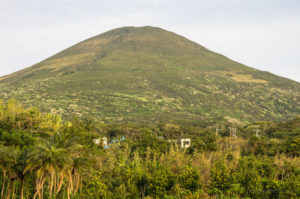
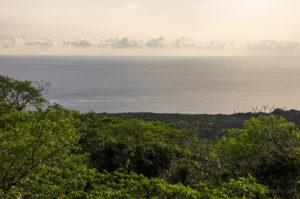
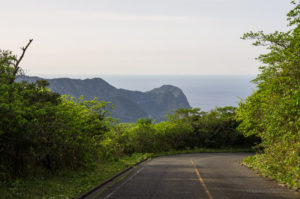
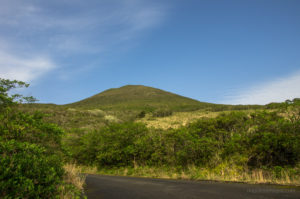
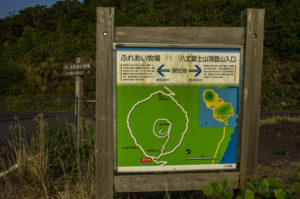
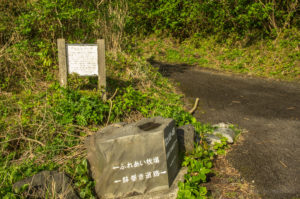

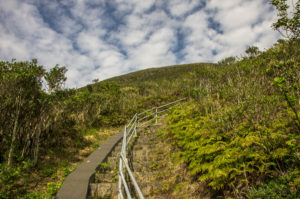
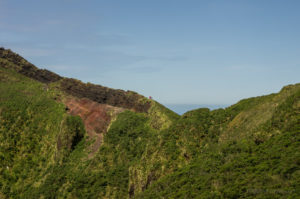

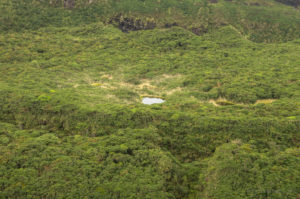
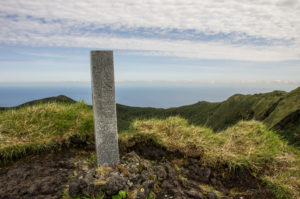
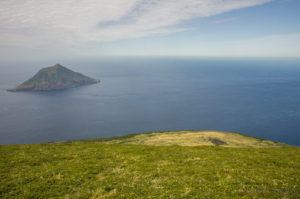
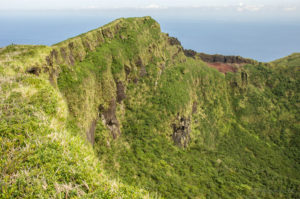

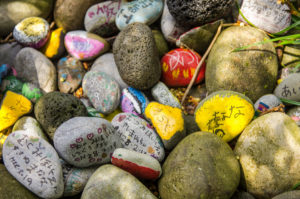
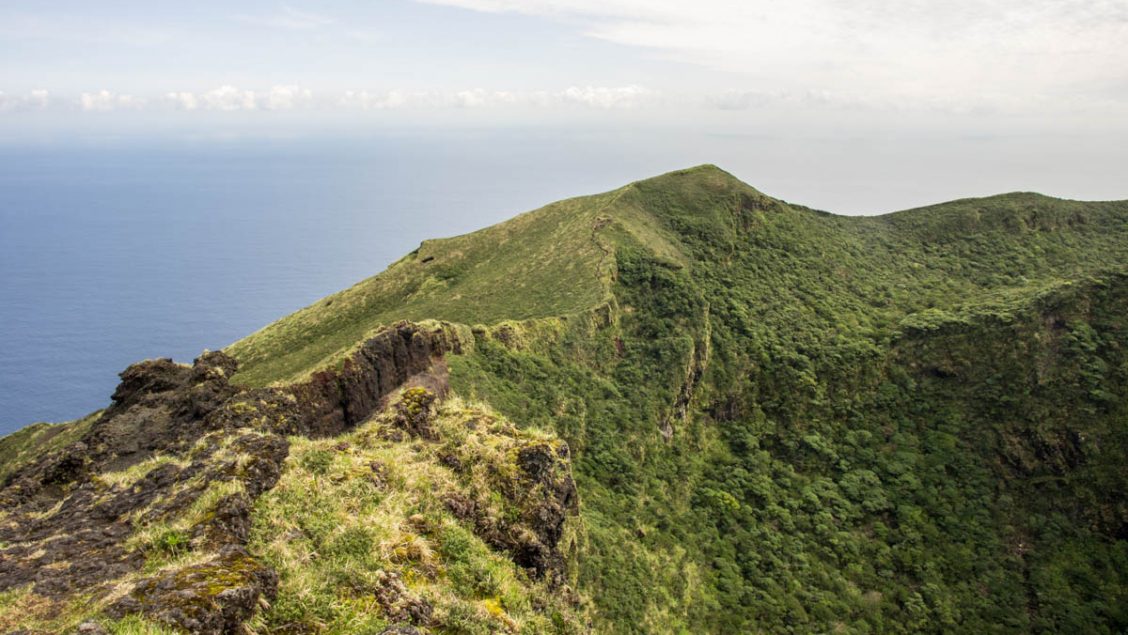


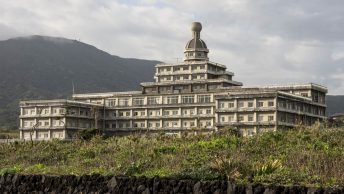



Fascinating account – truly you reach the parts that other explorers haven’t reached. Interesting that this miniature Fuji has a Sengen shrine, just like the real one …
Thanks very much 😉 Hachijo-fuji is a really beautiful mountain though unlike it’s namesake on the mainland receives few visitors. It was definitely well worth the extended travel getting there.
Hey, the duration is 7 hrs one way or both ways? 🙂
The duration is 7 hrs both ways including rest breaks.